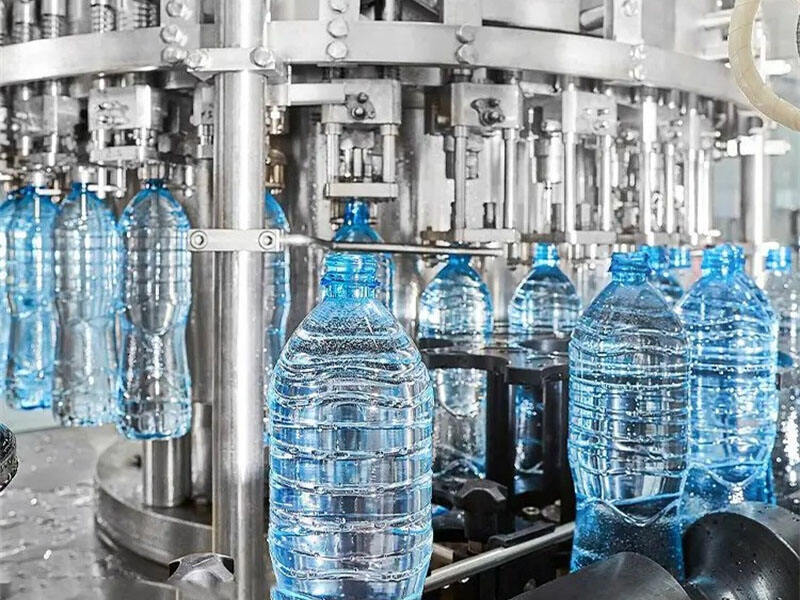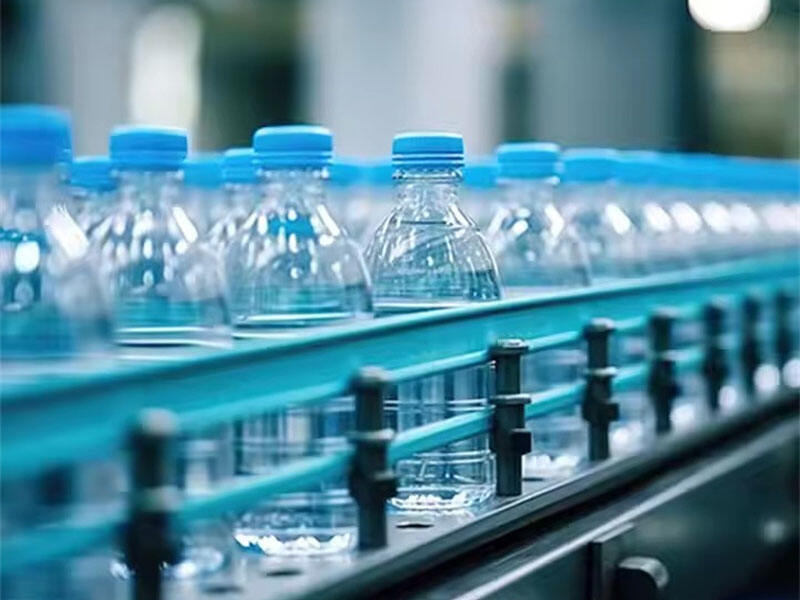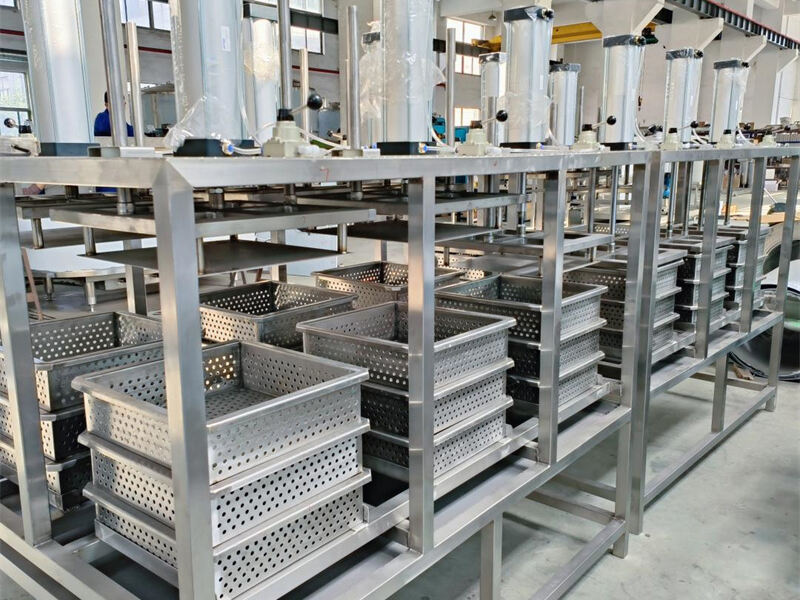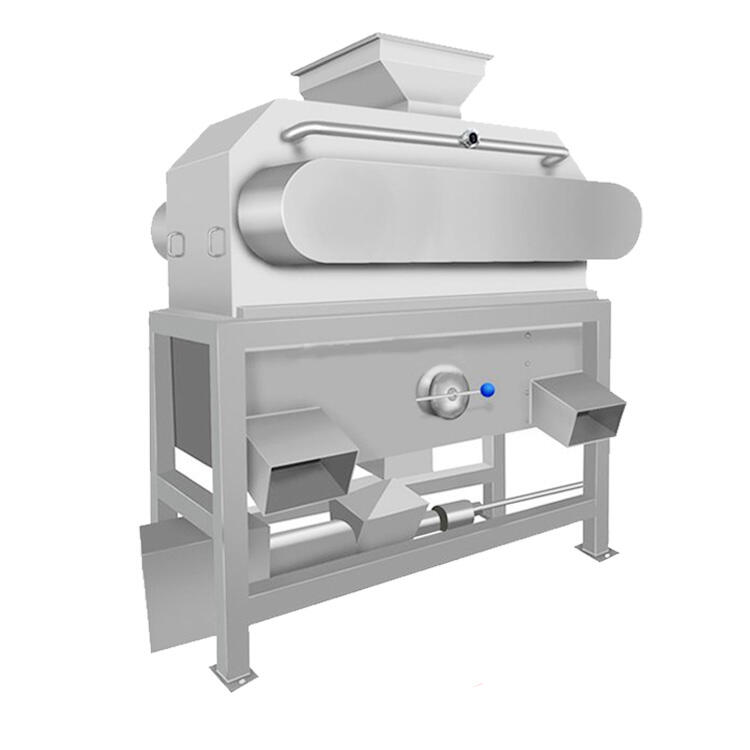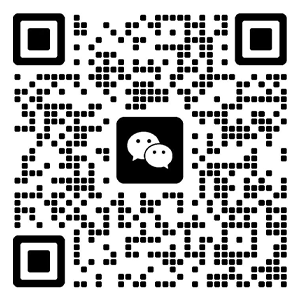Drinking Water Pure Water Production Line
Place of Origin: |
China |
Brand Name: |
Weishu |
Certification: |
CE |
- Description
- Standard production process flow
- Specifications
- Project planning process
- Recommended Products
Description
This production line is equipped with a raw water filtration and purification system, disinfection system, filling system, and packaging system. It starts with the purification of raw water, using a two-stage reverse osmosis water treatment machine to filter out all metal substances, macromolecular impurities, bacteria, odors, etc. After simple ultraviolet disinfection, it is made into pure water, then filled into containers, labeled, inkjet coded, and boxed. The lid production line can be equipped with multiple filling lines for different types of packaging, such as plastic bottles, plastic bags, and five gallon drums
Standard production process flow
1.Quartz sand filtration: Under a certain pressure, water with high turbidity is filtered through a certain thickness of granular or non-granular quartz sand, effectively intercepting and removing suspended solids, organic matter, colloidal particles, microorganisms, chlorine, odors, and some heavy metal ions in the water, ultimately achieving a reduction in water turbidity.
2.Activated carbon filtration: Being able to adsorb residual chlorine that cannot be removed in filtration can effectively ensure the service life of downstream equipment, improve effluent quality, prevent pollution, and also adsorb small molecule organic compounds and other pollutants leaked from the previous stage. It has a significant adsorption and removal effect on odors, colloids, pigments, heavy metal ions, etc. in water, and also has the effect of reducing COD. It is possible to further reduce the SDI value of RO inlet water, ensuring SDI<5 and TOC<2.0ppm.
3.Resin filter: Softening resin filter is also known as softening water device. He uses cation resin to soften the source water, with the main purpose of allowing the cation resin to adsorb calcium and magnesium ions (the main components that form scale) in the water, reduce the hardness of the source water, and enable intelligent resin regeneration and recycling.
4.RO membrane filter: Filter out all impurities and small molecules, leaving only water molecules to obtain pure water.
5.UV sterilization: Disinfect drinking water using 253.7nm ultraviolet radiation emitted by mercury vapor discharge inside the lamp tube as the main spectral line.
6.Ozone disinfection: Disinfect pure water with ozone
7.Filling and packaging: Finally, pump the water to the filling machine for filling and sealing treatment.
8.Blow drying: Use high-pressure hot air to quickly dry the moisture on the surface of the packaging. Ensure the normal operation of subsequent labeling processes.
9.Date coding and labeling: If it is a bottle, it is necessary to label and print the date on the bottle body.
10.Packing: Transported to the film packaging machine and cardboard box packing machine for packaging processing.
11.Storage and transportation: The packaged water after passing quality inspection, is transported to storage room or delivered to various distribution points.
Specifications
|
Raw materials |
Raw water or well water or natural water |
|
Hourly capacity |
1000-10000LPH |
|
Package type |
Plastic bottle/glass bottle/cup/pouch |
|
Product shelf life |
12-24 months |
|
Services provided |
Layout design/ installation and commissioning/training/after-sales service |
Project planning process
1.Determine the daily or hourly processing capacity of the production line based on market demand and expected output.
2.Conduct market research to determine the types of products and packaging required for production.
3.If possible, determine the approximate investment budget for the project, including factory construction, production line purchase, and personnel installation, commissioning, and training costs.
4.Design the production process flow of the entire production line, and configure the entire plan and architecture of the production line based on the determined process flow and overall budget.
5.During or before equipment production, design a production layout to ensure there is enough space to accommodate the placement of the entire production line. Simultaneously, according to the layout plan, complete the site leveling, water and electricity supply, and drainage system layout.
6.After the equipment arrives at the factory, install and assemble the entire production line according to the layout diagram and installation guide.
7.After installation, conduct separate operation tests on each device to check whether the motor operation, valve switch, sensor response, etc. are normal; Then carry out serial debugging of the entire production line.
8.After debugging, thoroughly clean and disinfect the entire production line before starting trial production. Conduct small-scale production, collect data, evaluate product quality and production line efficiency, and then optimize equipment and connections based on actual conditions.
9.Before mass production, provide systematic training to operators and maintenance personnel to ensure they are familiar with equipment operation, daily maintenance, and emergency response procedures.
10.Acceptance and delivery: After completing all the above steps, organize the final acceptance to ensure that the production line meets the design requirements and food safety regulations, and then officially deliver.


